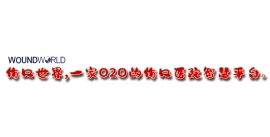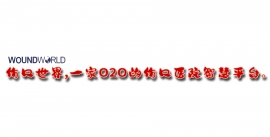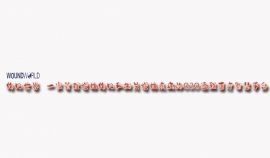文献精选
Eylem Togluk Yi˘gito˘glu a,* , Semine Aydo˘gan b a Istanbul University-Cerrahpasa, Cerrahpasa Medical Faculty Hospital, Ostomy and Wound Care Unit, Istanbul, Turkey b Istanbul University-Cerrahpasa, Cerrahpasa Medical Faculty Hospital, Sadı Sun
˙In tensive Care Unit, Istanbul, Turkey
ARTICLE INFO
Keywords: COVID-19 ICU Medical device-related injury Pressure injury
ABSTRACT
Background: COVID-19 patients are at risk for the development of pressure injuries (PI).
Aim: The aim of this study was to determine the incidence of medical device-related pressure injury (MDRPI) in patients treated in the COVID-19 Intensive Care Unit (ICU)s.
Methods: The sample of the study consisted of 132 patients, and each with a maximum follow-up of 7 days. Data were collected in the COVID-19 ICU of a university hospital between January and May 2021 by using a Patient Characteristics Form, the MDRPI Follow-up Form, the Braden Pressure Ulcer Risk Assessment Scale, and the Pressure Ulcer Staging Form.
Results: Of the patients, 59.1% (n = 78) developed at least one MDRPI. MRDPI was observed in those with a mean age of 65.45 ± 2.462 years who were invasively ventilated (51.3%), enterally fed (46.2%), placed in the prone position (78.2%), and had a Braden score ≤12 (50%). The most common medical devices that caused MDRPIs included endotracheal tube (ET) (31.2% n = 44), non-invasive mechanical ventilation (NIVM) (23.4% n = 33), nasal high-flow (11.3% n = 16), nasogastric tube (10.6% n = 15), the ET connection (8.5% n = 12), respectively. The most common sites for pressure injuries were the nose (28.8% n = 34), mouth (25.8% n = 34), ear (12.9% n = 17), lip (9.1% n = 12), and cheek (8.3% n = 11). The most common gradings of MDRPIs were stage 2 (28.8% n = 38), stage 1 (19.7% n = 26), stage 3 (9.1% n = 12) mucous membrane injuries (12.9% n = 17) and suspected deep tissue injuries (9.1% n = 12), respectively. The time to PI was 3 days (25.7% n = 36).
Conclusions: MDRPI was common among COVID-19 patients. It was found that the most common cause of pressure injury was ventilators, and PI developed in the mouth and lip sites most frequently in patients in prone position, stage 2 and suspected deep tissue damage was the most common grade. It is important to evaluate the skin in contact with medical devices in COVID-19 patients and to take the necessary interventions to prevent PI.
Seongwoo Yang1,*, Ji Won Park2,*, Hyuk Hur3,5, Min Jung Kim2 , Seung-Yong Jeong2 , Kyounghoon Park1 , Ik Yong Kim4,5
1 HERINGS, The Institute of Advanced Clinical & Biomedical Research, Seoul; 2 Department of Surgery, Seoul National University College of Medicine, Seoul; 3 Department of Surgery, Yonsei University College of Medicine, Seoul; 4 Division of Colorectal Surgery, Department of Surgery, Yonsei University Wonju College of Medicine, Wonju; 5 Korean Wound and Ostomy Study Group of The Korean Society of Coloproctology, Seoul, Korea
Purpose: The use of an ostomy for urination and defecation leads to reduced quality of life. Although many ostomy management strategies are needed, such strategies are often implemented by patients. Thus, there is a need for a home health
care service platform that can be used in ostomy patient management.
Methods: We developed an ostomy patient management platform by identifying the needs of patients and medical staff through the Chronic Care Ostomy Self-Management Training Program in the United States and from studies conducted in Korea.
Results: The platform encompassed physical management, psychological management, maintenance of social function, spiritual stability, and home medical care. These components were implemented through monitoring, self-care guidance, and a community platform. For the monitoring function, a patient entered their health status in a mobile application (app); the medical staff at the affiliated hospital then monitored the stoma status through a web interface.
Conclusion: Our platform allows medical staff to monitor ostomy patients through a web interface and help such patients to fully manage their ostomy at home using an app. We expect that the continued development of patient-oriented functions in our app will allow ostomy patients to experience quality of life improvements.
Keywords: Ostomy; Home care services; Telehealth; Digital health platform; Telemedicine
Received: May 23, 2022 • Revised: Jul 12, 2022 • Accepted: Jul 18, 2022 Correspondence to: Kyounghoon Park, M.D., Ph.D. HERINGS, The Institute of Advanced Clinical & Biomedical Research, 560 Eonju-ro, Gangnam-gu, Seoul 06144, Korea
Tel: +82-2-6949-3516, Fax: +82-2-6949-3517
E-mail: 该Email地址已收到反垃圾邮件插件保护。要显示它您需要在浏览器中启用JavaScript。
ORCID: https://orcid.org/0000-0001-5800-917X Co-Correspondence to: Ik Yong Kim, M.D., Ph.D. Department of Surgery, Yonsei University Wonju College of Medicine, 20 Ilsan-ro, Wonju 26426, Korea
Tel: +82-33-741-0573, Fax: +82-33-741-0574
E-mail: 该Email地址已收到反垃圾邮件插件保护。要显示它您需要在浏览器中启用JavaScript。
ORCID: https://orcid.org/0000-0001-6375-2216
* Seongwoo Yang and Ji Won Park contributed equally to this work as co-first authors.
This study was presented at The Korean Society of Coloproctology the 55th Annual Meeting, held in Busan, Korea from April 8 to 10, 2022.
© 2022 The Korean Society of Coloproctology
This is an open-access article distributed under the terms of the Creative Commons Attribution NonCommercial License (https://creativecommons.org/licenses/by-nc/4.0) which permits unrestricted noncommercial use, distribution, and reproduction in any medium, provided the original work is properly cited.
Declan Doherty, Andy Bridgen, Aaron Barber and Frank Webb
The total contact cast (TCC) is considered the gold-standard treatment for plantar neuropathic ulceration and acute Charcot neuroarthropathy. There is little evidence on the risk of venous thromboembolism (VTE) associated with TCC treatment. It is widely accepted that routine VTE chemoprophylaxis is not required for neuropathic patients treated with a TCC. Aims: This study aimed to investigate the rate of symptomatic VTE in neuropathic patients with a TCC and to provide up-to-date information to guide future practice. Methods: A retrospective service evaluation was undertaken. The PASCOM-10 online database was utilised for data collection within a communitybased podiatric surgery unit. Patients treated with a TCC or TCC with Bohler walker for plantar ulceration or Charcot neuroarthropathy between 2019 and 2021 were identified. Data were reviewed to ascertain if any evidence of symptomatic VTE had been recorded during casting. Results: A total of 53 casting episodes in 40 patients were included. All patients had a diagnosis of peripheral neuropathy. The mean length of time in a cast was 51 days (range 14–161 days). No episodes of total contact casting resulted in a symptomatic VTE. Conclusion: The use of TCC did not increase the prevalence of VTE in this patient cohort. Larger, prospective studies are warranted to further investigate VTE risk in neuropathic patients treated with a TCC and the theorised VTE protective mechanisms in this patient population.
Citation: Doherty D, Bridgen A, Barber A, Webb F (2022) The prevalence of symptomatic venous thromboembolism in patients requiring total contact casting for neuropathic foot complications. The Diabetic Foot Journal 25(4): 50–6
Key words
- Bohler walker - Charcot neuroarthropathy - Total contact cast - Ulceration - Venous thromboembolism
Article points
1. There is little evidence on the risk of venous thromboembolism (VTE) associated with a total contact cast (TCC).
2. This study aimed to investigate the rate of symptomatic VTE in neuropathic patients with a TCC.
3. The use of TCC did not increase the prevalence of VTE in this patient cohort.
Authors
Declan Doherty is Trainee in Podiatric Surgery, Buxton Hospital, Buxton, Derbyshire, UK; Andy Bridgen is Senior Lecture in Podiatry and Postgraduate Course Leader, University of Huddersfield, Huddersfield, UK; Aaron Barber is Lead Podiatrist in Diabetes, Diabetes Centre, Barnsley Hospital, Barnsley, UK; Frank Webb is Consultant Podiatric Surgeon, Buxton Hospital, Buxton , UK.
Matthew J Young, Lesley ML Hall and Joshua D Jones
The treatment of diabetic foot infections (DFIs) represents a costly and growing challenge to the NHS. DFIs can be difficult to treat for a variety of reasons, including late presentation of advanced infection, and antibiotic tolerance or resistance. Bacteriophage (phage) are ubiquitous viruses that infect and kill bacteria in a species-, sometimes even strain-, specific manner. Phages have been used to treat bacterial infection since 1919, but their use in the geopolitical West ceased in the 1930s due to a variety of factors, including the mass production of antibiotics. The modern antibiotic resistance crisis has driven renewed interest in phage therapy and 2,241 patients with mostly with antibiotic refractory infections have been treated since 2000, 79% of whom improved. This includes at least 310 patients with chronic wound infections, among whom 86.1% achieved clinical resolution or improvement of infection. Reassuringly, the available evidence suggests that phage therapy is safe and without notable side effects. Some phages also possess enzymes capable of degrading the biofilms that afford antibiotic tolerance to bacteria and underpin many chronic infections. Phages also act independent of antibiotic resistance, allowing the treatment of even pan-resistant bacteria, and topical or local application to DFIs means antimicrobial activity is independent of a patient’s peripheral perfusion. Presently only an option when antibiotics are not meeting a patient’s clinical needs, future integration of phage therapy at all levels of DFI care will radically transform the outlook for DFIs in the UK. Reducing the number of serious infections and amputations will not only benefit patients but will deliver vast savings to the NHS and reduce the amount of antibiotics used, making phage therapy a tangible response to the antibiotic resistance crisis.
Citation: Young MJ, Hall LML, Jones JD (2022) Phage therapy for diabetic foot infection. The Diabetic Foot Journal 25(4): 30–7
Key words - Bacteriophage - Diabetic foot infection - Phage therapy
Article points
1. Bacteriophages (phages) are viruses that infect and kill bacteria that can be used to treat infections, known as phage therapy.
2. The available evidence suggests that phage therapy is safe and effective for the treatment of wound infections.
3. Phage therapy has the potential to transform the care of diabetic foot infections.
Authors
Matthew J. Young is Consultant Physician, Royal Infirmary of Edinburgh, Edinburgh, UK; Lesley ML Hall is Consultant Physician, Diabetes and Endocrinology, Queen Elizabeth University Hospital, Glasgow, UK; Joshua D Jones is Consultant Physician, Infection Medicine, Edinburgh Medical School: Biomedical Sciences, University of Edinburgh, UK; Clinical Microbiology, Ninewells Hospital, NHS Tayside, Dundee, UK




